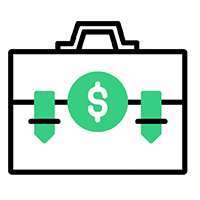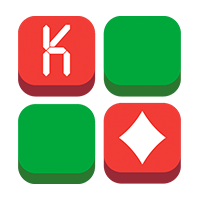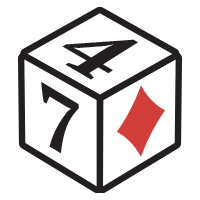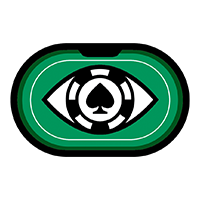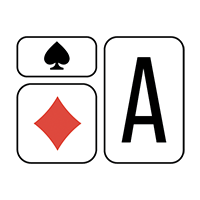Ben Rolle, who recently won $310k for winning the two-day $10k GG Millions tournament, has released three long videos detailing his journey to the top prize. For the first episode, which covers all of Ben's decisions leading up to the final table, we've selected a few hands that the editors found the most interesting and valuable to comment on.
During the analysis, Bencb disabled the display of opponents' names in order to freely talk about his adjustments.
Okay, this is going to be very interesting. We get two calls and small blind squeezes.
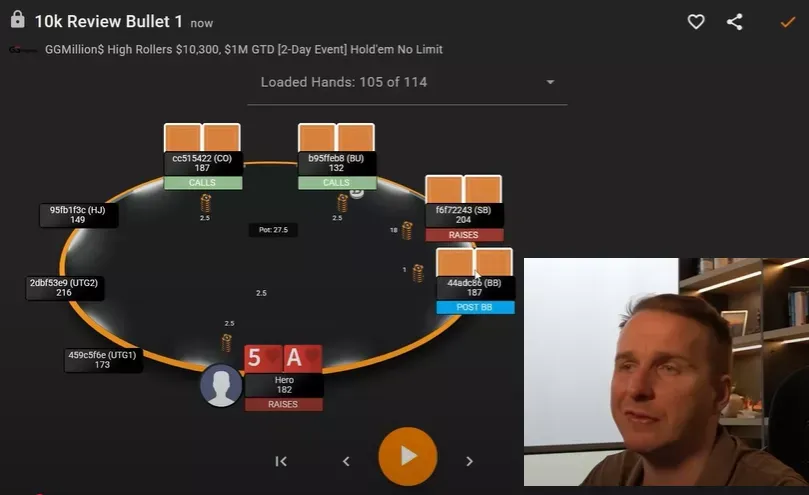
Now this is a spot I would also play very differently from low stakes, mid stakes, and high stakes. Here on high stakes, I decided to four-bet. This reg was a really good reg—quite aggressive. So he's going to find bluffs, and therefore I really like my four-bet. I think this is one of the hands we want to be doing it with.
We're going to be four-betting like aces, kings as well. We can four-bet some ace-kings as well because he's still going to have cards. We can still fold if he jams, but it's good to also knock out cutoff and button and get the pot heads-up. That has a huge impact. Keep in mind, if they have jack-ten suited or ace-queen suited and we just call, they're going to be overcalling, and we get those hands out.
So if you have ace-king or they have pocket eights, pocket nines, pocket tens—and if you reraise and you get those hands to fold—now your equity goes from like 30% or 20% because it might be four-way, and it goes up to 50% or 45%.
Now small blind decides to call. Again, this is something on low stakes you don't need to do because you don't need to be balanced. People are also going to be squeezing a lot less, so you don't need to rebluff. That's why here on high stakes I have these hands in my range. I will also be paid out more often. If they see I just always squeeze aces or kings here—or reraise aces or kings—they're not going to pay me out. So I really like my squeeze here—or my re-squeeze basically, or my re-reraise, whatever you want to call it.
Now small blind calls—which I think is going to be ace-king, ace-queen, jacks and tens—and I think we already start having fold equity against something like ace-queen of clubs. He can also have king-queen perhaps in hearts, king-jack in hearts, something like six-seven in hearts. Definitely possible. So with my very strong flush draw, I bet. And I also would get the money in on the flop because we dominate some of his flush draws that he can potentially have.
Flop (84bb, effective stack 146bb):
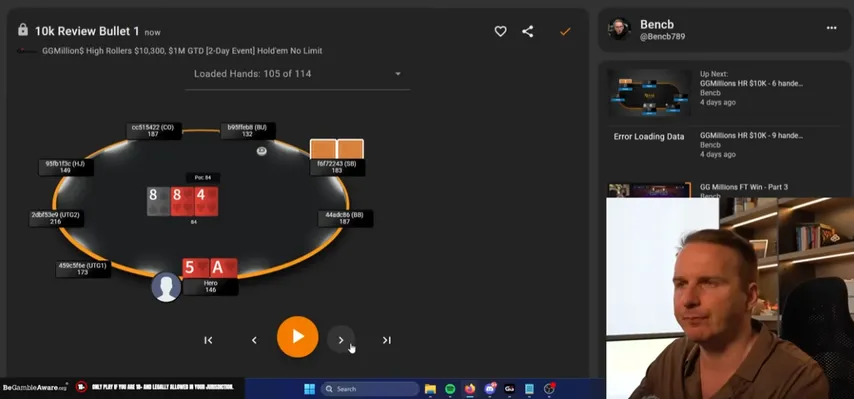
I would expect that those hands call. I think ace-queen offsuit would fold, but again the ace-queen suited combo is going to be in there. So it's good to fold these out. Even if he's on ace-king of clubs, it's very dicey to continue here. So yeah, I call, and I would very often just jam the turn. We would have exactly pot size left and apply maximum pressure against a hand like nines, tens, jacks.
The bet size is a quarter of the pot, 21bb. The SB folds. If he had called, the pot on the turn would have been equal to my stack, and on many runouts I could have shoved, putting maximum pressure on pairs from nines to jacks.
We take down the pot.
Queen-jack suited is going to be interesting. We call, we flop the straight.
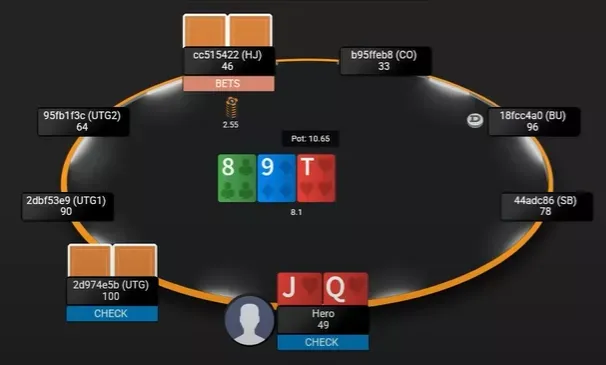
So this is a very interesting board, and especially multi-way is where I think you want to—with one player behind that can still have some bluff raises—I think I'm just going to call. Yeah, I think it might be a little bit too greedy to raise this.
Turn (13.2bb, effective stack 42bb):
I decided to lead now. That is interesting. I think both options are fine—check or bet. But once I call, I'm afraid that hijack might be checking back a little bit too much. And again, I make this purely opponent-based. If I think he's not aggressive enough, I'm just going to be betting myself.
And remember, we are not raising the flop here, so we still have all of the strong hands. If I raise here, under the gun might fold ace-ten. He might fold jack-ten, and I want to keep those hands. He's going to have a lot of zero percent equity in his range that can improve to trips or two pair and even put more money into the pot, right? Or like pocket sevens and calls makes a straight.
Now he raises, and I think now at this point we just get the money in. I accomplished what I wanted to accomplish—to use bluff raises. And if he has something, there are going to be so many action killers. I don't want another heart. I really don't want another heart. I don't want another seven, I don't want another jack, queen, king, six.
So yeah, we just get the money in. I don't think once he calls he's going to pull the trigger. Maybe some players would, but also we can do this—I would do this—you can do this with some jack-nines or nine-sevens or even jack-ten. I think there are some hands that raise and say, "Alright, it's ace-ten, and if he jams, I'm folding." But here, always fast play. Always fast play. Don't be results-oriented.
King-six—nice hand to check-raise the flop with against the button range. Wouldn't do this necessarily against under the gun. So there's a difference.
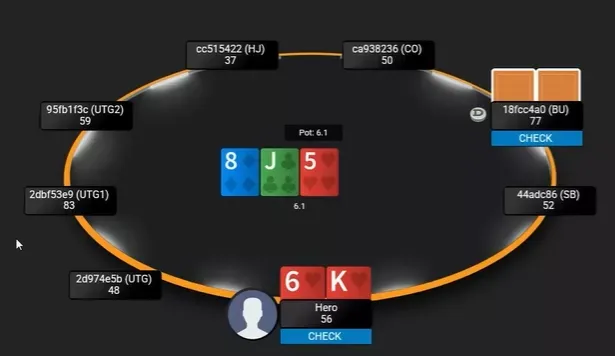
Here's quick advice on check-raising flops: against button or cutoff, you can pick hands that are not necessarily so strong, but you at least want to have something—an overcard, backdoor flush draw, or ideally overcard + backdoor flush draw + backdoor straight draw like king-six, king-seven in clubs and hearts and diamonds. Same for the queen as well.
Alright, button range is going to be really wide. So you also want to raise thin value like queen-jacks. We're not raising queen-jack against under the gun. So under the gun I would just fold, because we still have six-seven, ten-nine, right? We have so many potential draws.
But against the button, I would either check-raise or check-call. If he bets very small, I think calling—having some disguised improved king-x on the turn—that's also fine. We can also lead some sevens, some 9x turns. You can do a lot of funky stuff here that is still profitable.
(Ben didn't look at the turn and river, but judging by the fact that his stack didn't increase in the next hand, he didn't manage to win.)
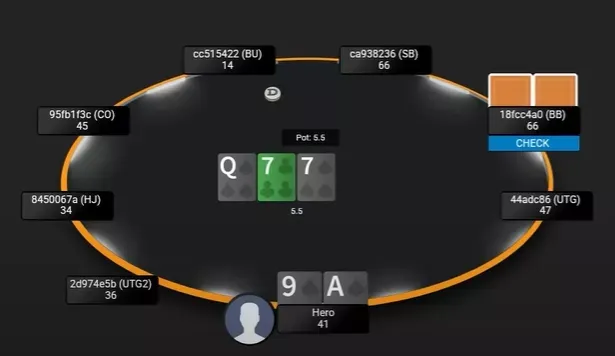
Ace-nine suited. So here, it's a board where we definitely want to be checking. I would guess around 30% of the time, because we're not going to have all the 7x. But with our nut flush draw, I think it's really good to go ahead and bet.
Turn (9.13bb):
Here, honestly, I don't like my turn bet because we're targeting tens, nines, eights. And having a nine—if you have ace-four in spades, it's a lot better. Obviously it's still a profitable bet. It's still going to make decent profit in the long term. But compared to check, I think check is more profitable. So that's why I'm not a big fan of my turn bet.
Also, we fold out like a ten-deuce in spades, right? So I think it's better to go for check-check, and then depending on the sizing, to potentially bluff-catch. He's going to have jack-ten of clubs, king-jack of clubs. And a lot of these hands now actually might fold because they don't get the right price. So I think a slight error there from me to pick the bet over the check. Again, nothing big.
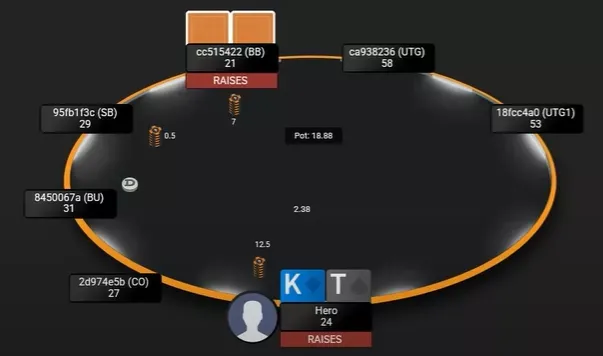
All right, this is funky. I really like my clickback. So this guy is way too aggressive, and against these types of opponents, I very often just click it back. I want to use wide hands as well because I know he's capable of now ripping in his A4 offsuit, but just purely based on the way some players play—and it's mandatory—I do this a lot.
It works quite often, and sometimes it doesn't work, and you look like an idiot.
I get tens, I go all-in after a raise and a call, but two people have a hand to bet, and my first entry ends there:
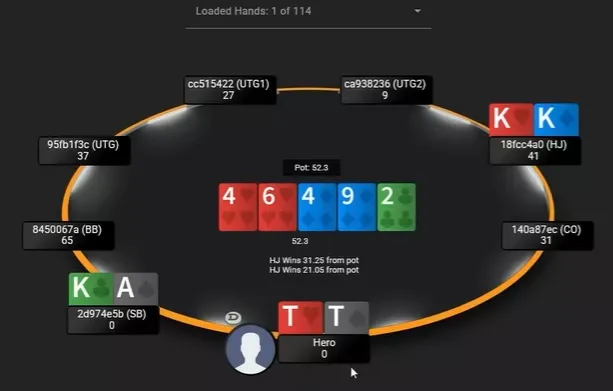
I re-enter and start over with 30 blinds.
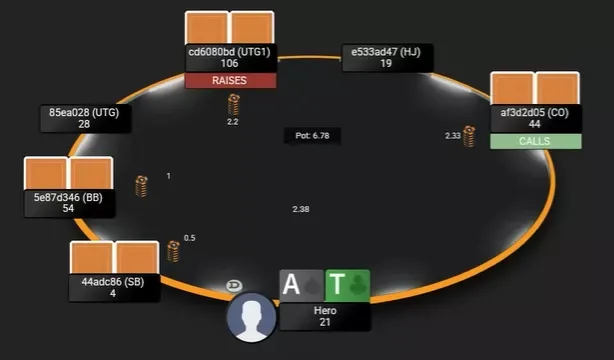
So I make a little squeeze here—I think that's good. I like it. Especially with this hand, I think it's a really good hand to do it with. I think shoving is also fine, but I really like the small squeeze. It applies a lot of pressure against hands like A4 suited, K10 offsuit, QJ suited. And even if they call wide because they’re getting a good price, usually those hands that call, we do very well against them.
So if they continue with, let's say, K10 suited, KJ suited, A9 suited—you know, these kinds of hands—I think we always get AJo to fold, which is really good.
Flop (17.58bb, effective stack 15bb):
On check I make a continuation bet of 3.5 bb, opponent pays.
Turn (24.58bb, effective stack 11bb):
Yeah, so we check. I think this turn we always check.
River (24.58 bb):
Opponent goes all-in. I call and win against .
That was a very interesting hand for villain. Obviously we got a bit lucky here. I'm very... I mean, with 13 big blinds in the middle, yes, I get it—"Oh, you have button dominance"—but you're out of position. And out of position means you will lose EV. You will also give up on certain runouts where you have the best hand. Because again, I can define his range very well—AJs, ATs, KQs, KJs. So there are going to be a few better ace-highs, and some ace-highs will dominate.
If the board comes 10-7-5, okay, he's going to have some A7 suited. Or let's say it's 9-7-5, he's going to have A7 suited, and then there's a jack or queen on the turn or king—I continue bluffing. I just think when you have so much in the middle already compared to what's left, you just rip it in. I think you just rip it in, in position. You will also see that with ICM you do very little calling—you want to be a lot more aggressive.
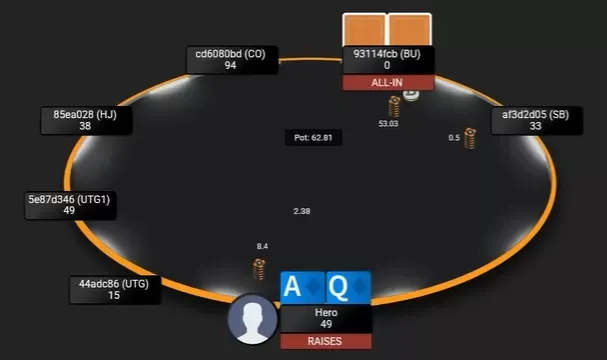
I 3-bet the button, get a huge re-push. Well, what can I do, the stack is going to the center of the table.
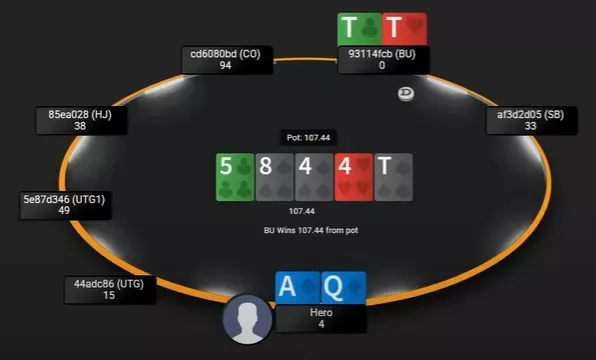
Wait, did I lose? And spin from four blinds? Haha! Looks like it. Oh my.
Okay, next hand there's a triple coming up. Can't hurt.
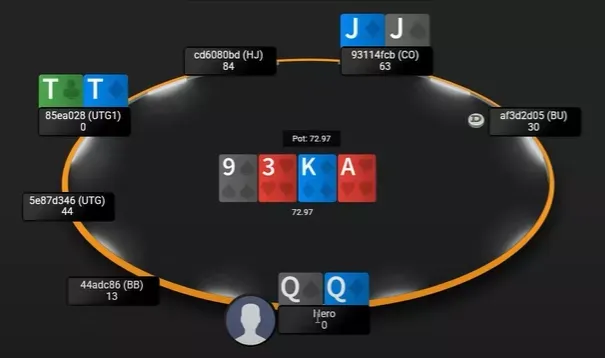
It's 13 blinds again. Never lose faith!
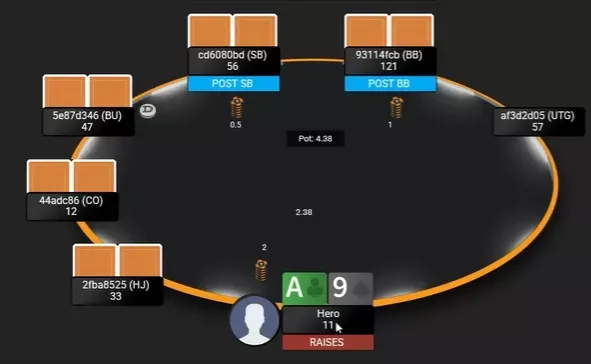
Note: A good hand to raise with my stack! The thing is, we can't open small pairs and many suited connectors anymore, so we're connecting a lot of ace-high hands – all suited and offsuit all the way down to A8o!
BB calls.
Flop (5.38bb):
Very good texture for us. Useful to have a nine – block his semi-bluffs and calls. Useful to knock out hands like , which can squeeze us out of the game if necessary. I make a small continuation bet of about a third of the pot and take it.
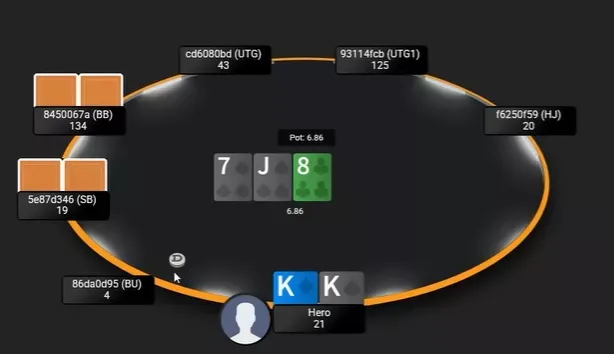
Kings—okay, so this is very interesting. I see a lot of you guys these days just always auto c-betting a third pot here, a third pot there. But you will see that... use your brain. So we have a recreational here in the small blind. And obviously, I want to make a two-street hand. If he's on something like J5 of hearts—he’s a big, big recreational, a big fish—you just want to put the money in.
They're not bluff-raising enough. They're not raising thin enough for value. They just call.
And I see a lot of you guys—sometimes for my students, when I go through hand histories—I'm like, "Why do you even bet a third here?" "Yeah, but the solver..." like—shut up. You're playing against a recreational. You just get the money in.
To be honest, against this line if I have KJ for whatever reason, I think you just fold the turn. We’ve just seen it in the multi-way sim. I mean it's not QJ10, but you probably noticed: big bet flop, jam turn. Now apply what we just learned in the multi-way section. Just apply it.
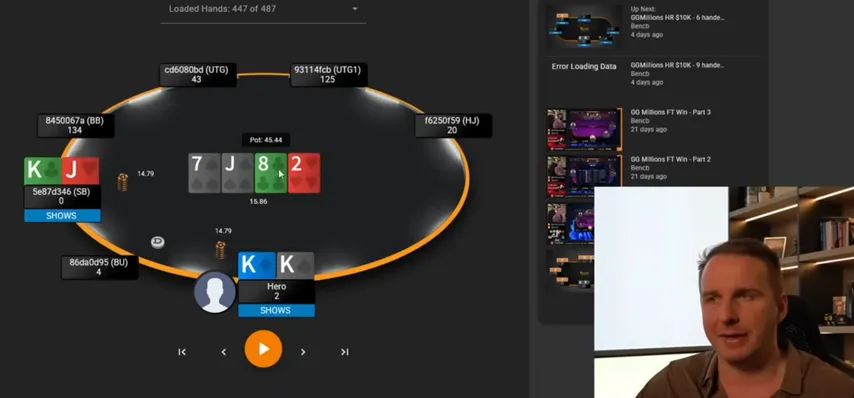
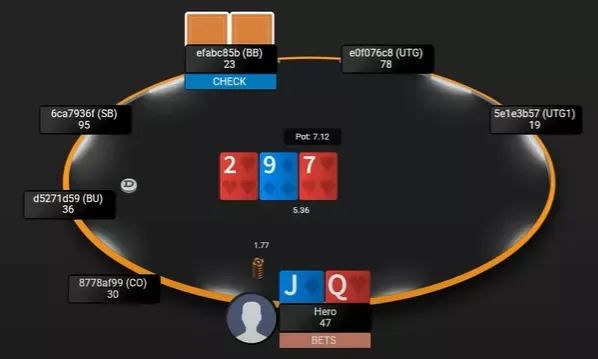
Queen Jack off—really like my check here. Again, this is just purely based on the read I have on the population—that they are not stabbing enough here. And then I can go for big turn sizing. And I hope I continue on the river. Yeah. Wow—he jams.
Okay, I mean, why do we want to continue on the river? So we have a couple of options. We can just go small, like six big blinds—just fold out AJ or KQ. Or we can go big and even apply pressure against something like pocket sevens, pocket nines. I think anything in the middle doesn’t really make sense. Like nine big blinds doesn’t make sense. Ten or eleven big blinds makes no sense. Then go small—and I think you accomplish almost the same as you would with half-pot. Or you go big, and then you gain the additional fold equity against nines, sevens, or something like A8 suited that might decide to hero-call.
He decides to jam—probably sixes, maybe check back 79, I don’t know. Bit unlucky. Wouldn’t expect that. I think this is a really good bluff. We're going to get this through very often on the river. But I think it's a mandatory bluff.
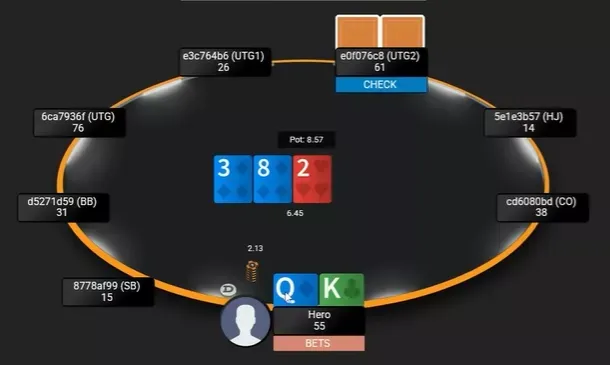
I go under the raise early with KQo. With this hand you can both call and 3-bet. On the flop the opponent checks. With one of the weakest offsuit hands in the range I bet a third of the pot, he calls.
Turn (10.7bb):
Opponent checks. I REALLY like to continue the attack here. We have more combinations , we put for protection, we have nines and tens in our range. I want to bet now and bet the river if a heart doesn't come, because the most natural check-calls for my opponent are overcards with a backdoor flush draw. The ideal river is a diamond.
I bet 11.5 bb – with value I have to collect greedily because of two flush draws. There is a call.
River (33.7bb, effective stack 44bb):
Good, good river! The opponent checks, and I have to bluff. Just not all-in, no, because I would ideally like to have draws with any set. If I push, he will be able to calmly overfold and open me only with flushes and sets. So I choose an intermediate sizing, as if I want to call – 20 bb. And the opponent, fortunately, folds.
Note: When I played the first entry, my bluffs did not work, but this should not affect the game. Continue to believe in yourself, do not give up!
Ben's active play on the approach to ITM did not bring him much success, and when he went all-in with an average stack against and lost, again with only 8 blinds left. This time the jacks came to the rescue – another short stack opened in early position with fives and called Ben's all-in for 7 bb.
It was 14bb, and almost immediately he got Aces. The aggressive chip leader on the button responded to a min-raise from the middle with T9s – and there was another double-up. “A terrible shove,” Ben noted, “because it blocked a lot of my raise-folds. And he’s a reg! Even regs have big leaks. Well, don’t forget that we make money on other players’ mistakes. We don’t have to show any miracle lines. We just play clean, quality poker and punish our opponents for their mistakes.”
Finally, the tournament entered the ITM stage...

If the bubble was still going on, I would have folded. And here the decision is quite difficult, the opponent is not overly aggressive. There are 14 people in the game, the prize pool grows by 12. I thought for a long time, but still decided that in such a situation people will push ATo, , all suited aces, so I called. I was lucky – I was shown a worse hand, ATs, and I won.
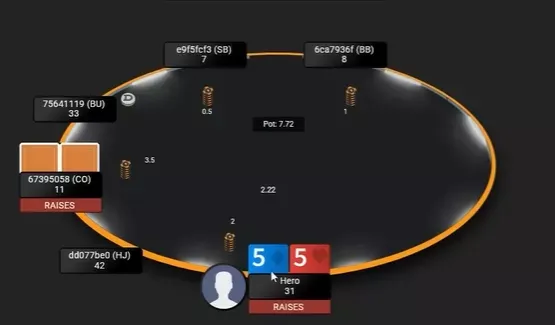
All right, so the pocket fives here—again, there are multiple scenarios here. This guy is very, very tight—I think folding is okay. This guy was reasonably aggressive—the way I would describe him. That’s why first, if he has a premium, I get an incredible price. I need to invest 1.5 big blinds for a 9 big blind pot. Yes, there’s very little behind, but the immediate odds are insane. And then there’s a chance he gives us a bluff. And the bluffs actually are very often going to be A♠5♠, A♠4♠, A♠3♠. So we do very well against that. Maybe A♠T♠ off—don’t get me wrong. And he c-bets once and then we check it down.
I don’t think this is a spot where people—if this is an Adamo, where he doesn’t give a [ __ ] and even blasts it off with his ace-high postflop—then again, my equity realization drops with pocket fives, and now I would fold it. And I’m also sharing my thoughts on stream because I remember I think I was streaming, or at least off stream. So if you see the footage, you can probably hear me talking about the hand in the same way.
Anyway, I made the call.
Flop (9.22bb, effective stack 11bb):
All right, so now he bets 2.3 big blinds. Again, I think if he has A7 off or A3 off, he would c-bet once because usually a Broadway board is good for us if we defend KJ, KQ, maybe AJ suited, etc. So here again, getting an incredible price. It’s not a dangerous board. It’s a really good board for us. We call once—and now from the turn, it’s a no-brainer.
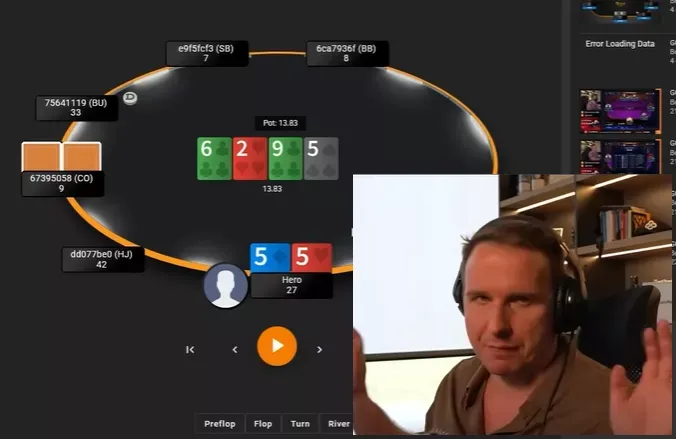
All right—this is where we get lucky. He has aces. Boom.
And the thing is—I think that even with aces, even if I know he has aces—I think we just have to call it. Because if we hit our five, we’re always going to stack him. And for us, the additional 1.5 big blinds—if we have 31 big blinds or 29.5 big blinds—it doesn’t really matter. Even if we call another 2.5 big blinds on the flop, yeah—we’re going to have 26 big blinds, or we can potentially be up to 50 big blinds and get to the final table as a big stack.
Now hear me out—there’s also consideration, because on GG, on the final table as a big stack, you get to choose the seat. So even there, there is a little bit of EV now—approaching the final table bubble as a big stack and having the opportunity to be one of the top three stacks, or potentially the chip leader, to choose a much better seat. So you might still get seated next to one of the big stacks if you're top two or top three, but you can at least choose to put the opponents you feel the most to your right from the mid-stacks. So that’s also a huge advantage compared to going in as a top five, top six, or top seven stack, where you’re basically just moved around and don’t really have any say in getting a good seat..
Raise with KTs on the button. The short stack goes all-in. I call and head to the final table:
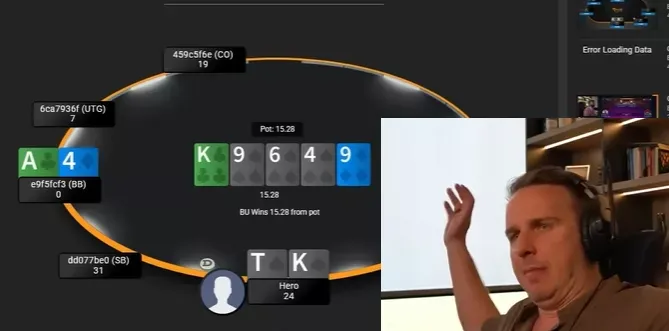
To be continued!


